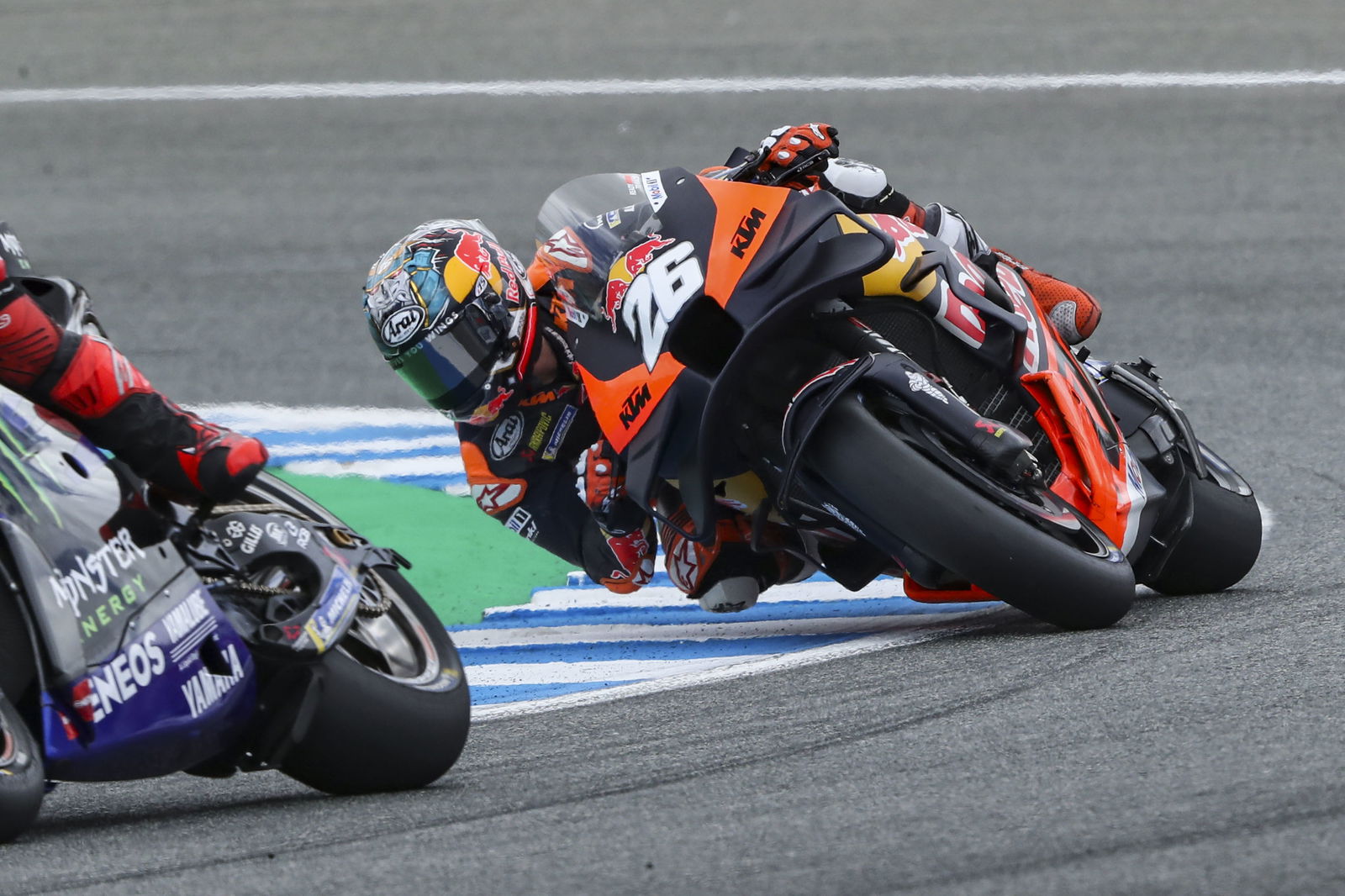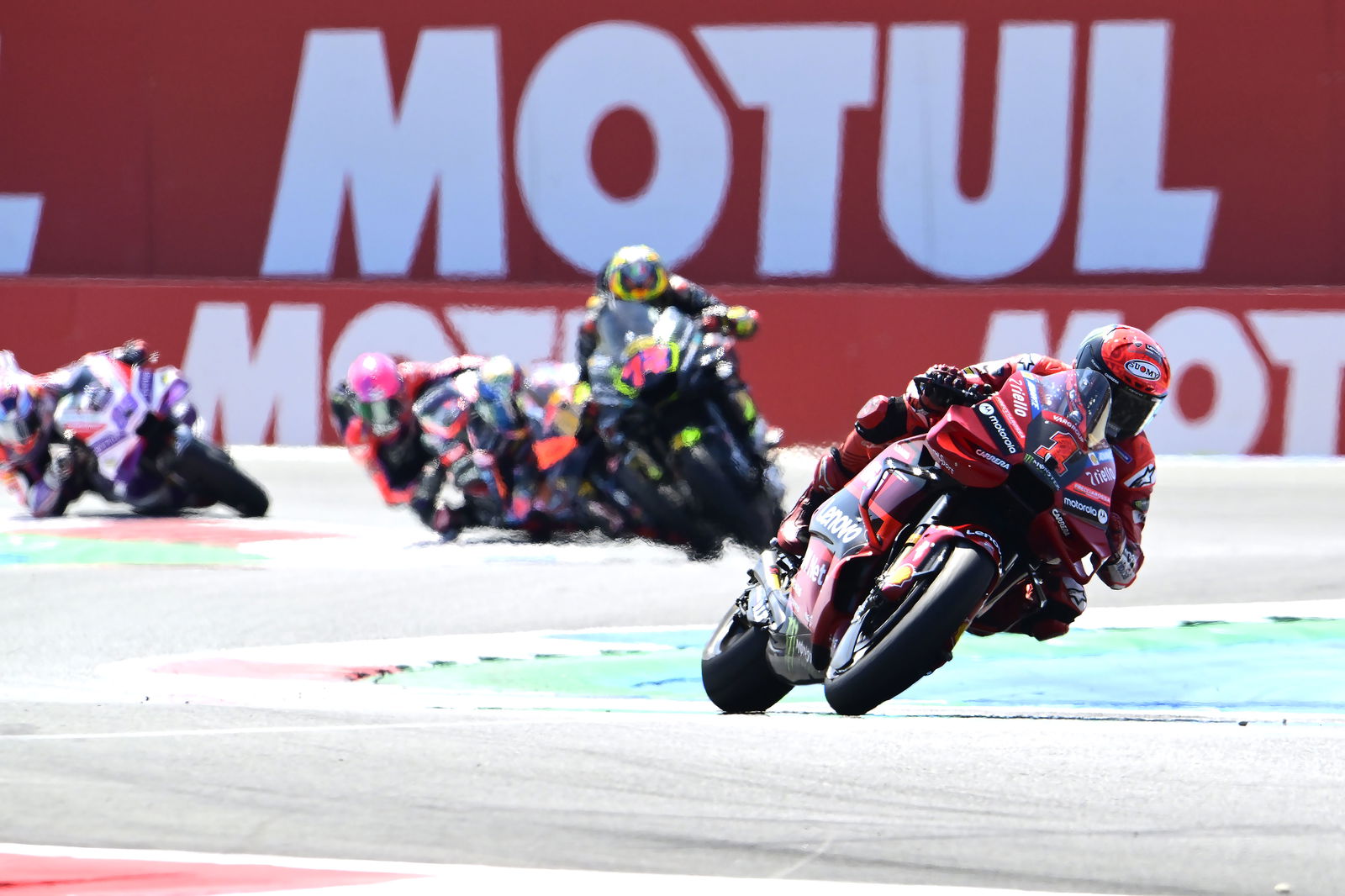Five Things We Learned From the Spanish MotoGP
The MotoGP Spanish Grand Prix produced one of the most intense battles of the 2024 season, and gave some interesting insights

MotoGP doesn’t always deliver in Jerez. The Spanish venue has produced some absolute snoozers in the past (2014, 2015, 2016, for example), but it’s also been the site of some of the most celebrated battles in the championship’s history (1996, 2005, 2023), and 2024’s edition of the Spanish Grand Prix absolutely falls in the latter category.
From the points leader crashing to a dramatic collision of eras in a battle for the win, the Spanish delivered in intensity, drama, and action.
Numbers aren’t everything
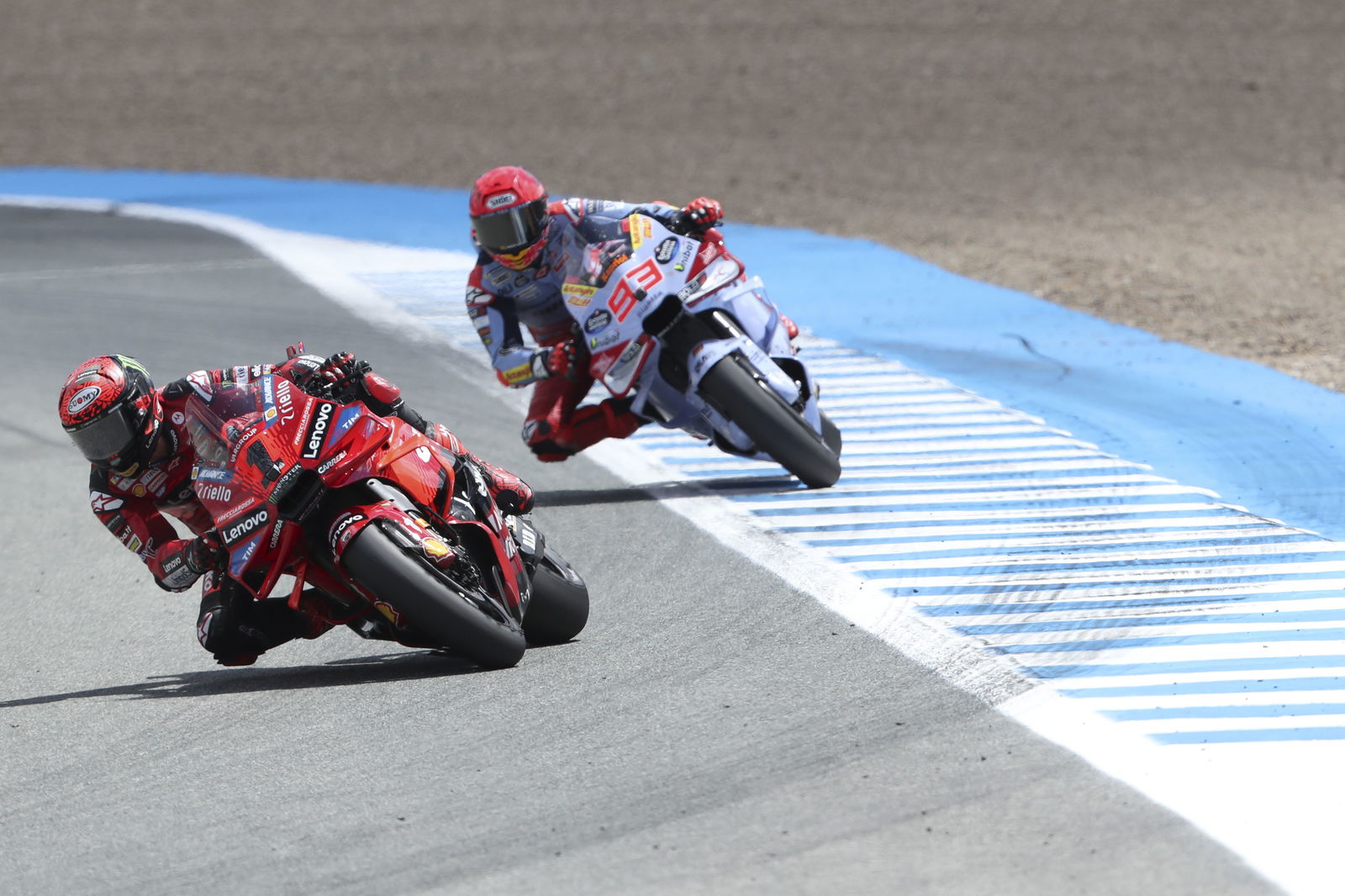
Personally, I hate using one series’ success to highlight another’s failures. It doesn’t mean I don’t do it, but it feels unnecessary. So, when I say “series' like IndyCar and F1 occasionally publish overtake statistics after a race, as if this means the race was good,” I don’t mean it as an attack on F1 or IndyCar.
But, the MotoGP race in Jerez last weekend was absolute proof that the raw number of overtakes is not indicative of the quality of a race. What a race needs to be good is for the audience to feel like an overtake is possible, but also that there is a chance for the person being overtaken to defend that overtake, or respond to it. Such a balance makes the outcome unpredictable.
There were nine lead changes in last Sunday’s Spanish Grand Prix. That’s not a crazy amount, and not all of those were legitimate overtakes. The only five legitimate passes for the lead were between Bagnaia and Marquez on lap two, lap 21, and lap 22, and four of them all happened at the same two corners.
But the reason the Jerez race was great was that we could all see the overtake coming, we could all see where it was going to come, and we all knew that Bagnaia could respond to Marquez if he possessed the skill to do so. He showed that he did, which was - perhaps - unexpected to some extent.
Narratives are
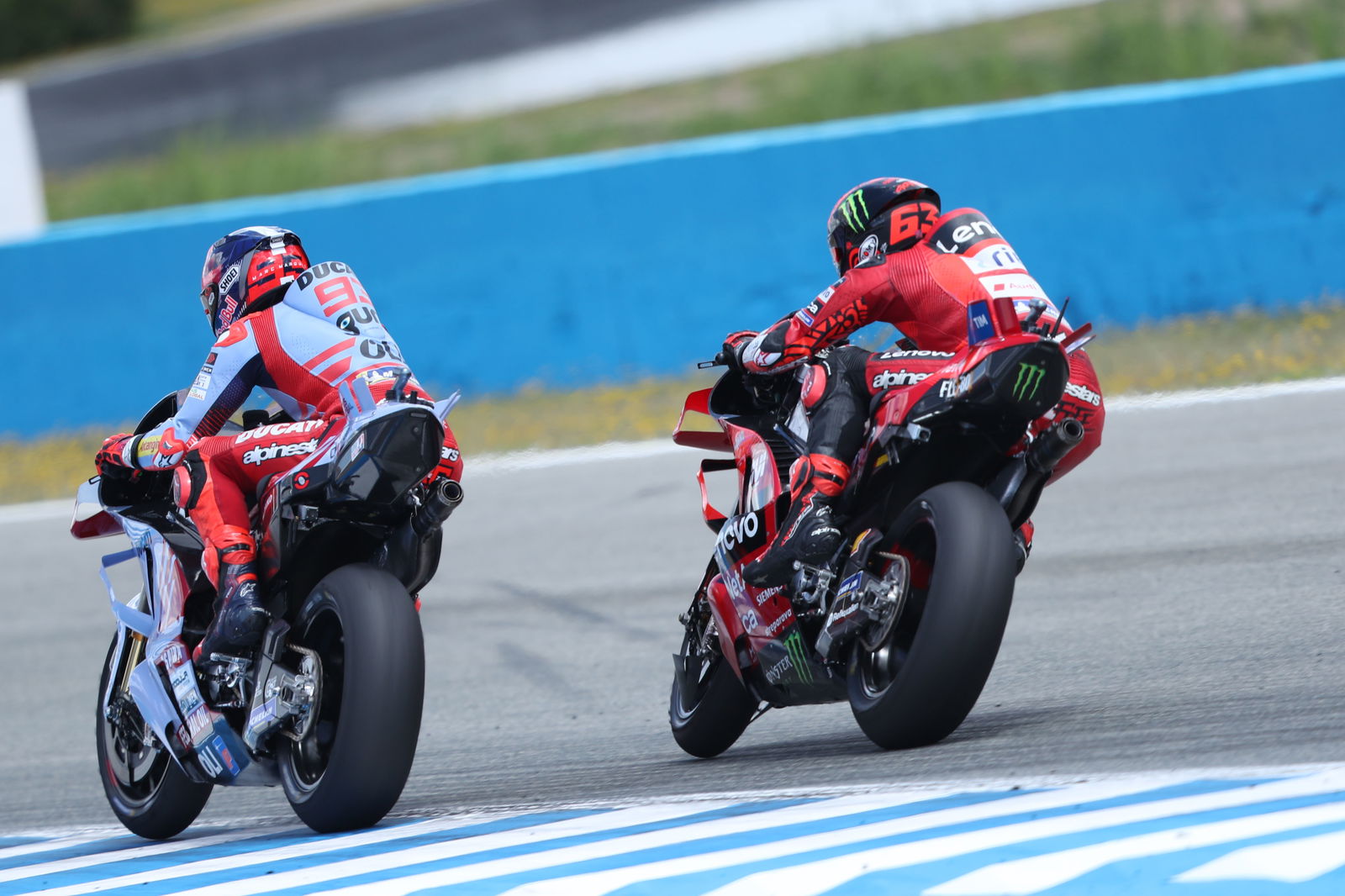
The reason the Bagnaia-Marquez fight was so great was because it was so intense, and it was so for two reasons: the people involved, and their respective paths to that point.
Marquez’ story is famous, of course. A brutal champion until 2019, his time since 2020 has been spent trying to return to the front, overcoming health issues and mechanical issues in the process. Finally, in Jerez, he was ready to take to the top step again, confirming himself as the title contender we all knew he could be. Only Bagnaia stood in his way.
Bagnaia’s story is less dramatic, but the 2024 season hadn’t been going to plan. The Qatar Grand Prix win was his only podium in seven starts before the Spanish Grand Prix, and he was 42 points behind Jorge Martin, who won the Sprint and was leading the Grand Prix in Jerez until he crashed on lap 12.
Marquez is seen as one of the strongest riders on the grid, one of the most savage and desperate-to-win of all-time. To beat him head-to-head you not only need a good bike, you also need to be willing to go as far as Marquez is to take victory. Although Bagnaia is a two-time champion, he isn’t seen to have the brutality required in those kinds of all-in scraps with a rider like Marquez. But his unwillingness to back down to the #93 on Sunday showed him to be stronger than most people think, or at least thought.
You put an animal like Marquez behind a guy like Bagnaia and you think there’s only one possible outcome. In Jerez, Bagnaia proved himself to be just as much an animal as anyone - desperate to win, and unwilling to simply relinquish the #1 plate he holds for the second year in a row. When these two champions collide, nothing is certain.
Marquez’ asymmetry

Part of the reason for Marquez’ impressive Jerez performance was his speed in the track’s fast left-hand corners, especially turns seven and eight. When he passed Marco Bezzecchi at turn six on lap 14, he’d cleared off by three-tenths by the time they got to turn nine.
Marquez has always been exceptional in left-hand corners, and the longer the better. He’s comfortable sliding and feeling the bike on that side, more so than on the right, and that’s mostly because of his enjoyment of flat track riding. It’s why he’s been so good at Sachsenring in the past, and why he went unbeaten in the US - where most of the tracks are anti-clockwise - between 2011 and 2018.
In comparison, though, he’s pretty average in the rights. Marquez closed Bagnaia’s advantage from over half-a-second entering the final lap to 0.350 seconds by the third split, which comes between turns nine and 10. But, in the two fast right-handers of turns 12 and 13, he lost all of that again, which cost him a shot at passing Bagnaia in the final corner of the race.
Fabio Di Giannantonio, as reported by GPOne, explained this asymmetry after the race. “He’s a bit peculiar,” Di Giannantonio said of Marquez. “On the right, he’s one of the worst Ducati riders, and on the left he’s one of the best. I never compare myself too much with him.
“I focus more on my teammate (Marco Bezzecchi, who finished third in Jerez), or Pecco (Bagnaia) and (Jorge) Martin, who in my opinion are the ones who ride the Ducati better.”
It’s a curious assessment from Di Giannantonio, and is backed up by what we saw in the race: that Marquez was able to take huge amounts of time in the lefts of turns seven and eight, but that he also struggled to hold on to the time he’d gained through the four following right-handers. It hints at the performance still left for Marquez to find with the Ducati.
Acosta’s troubles
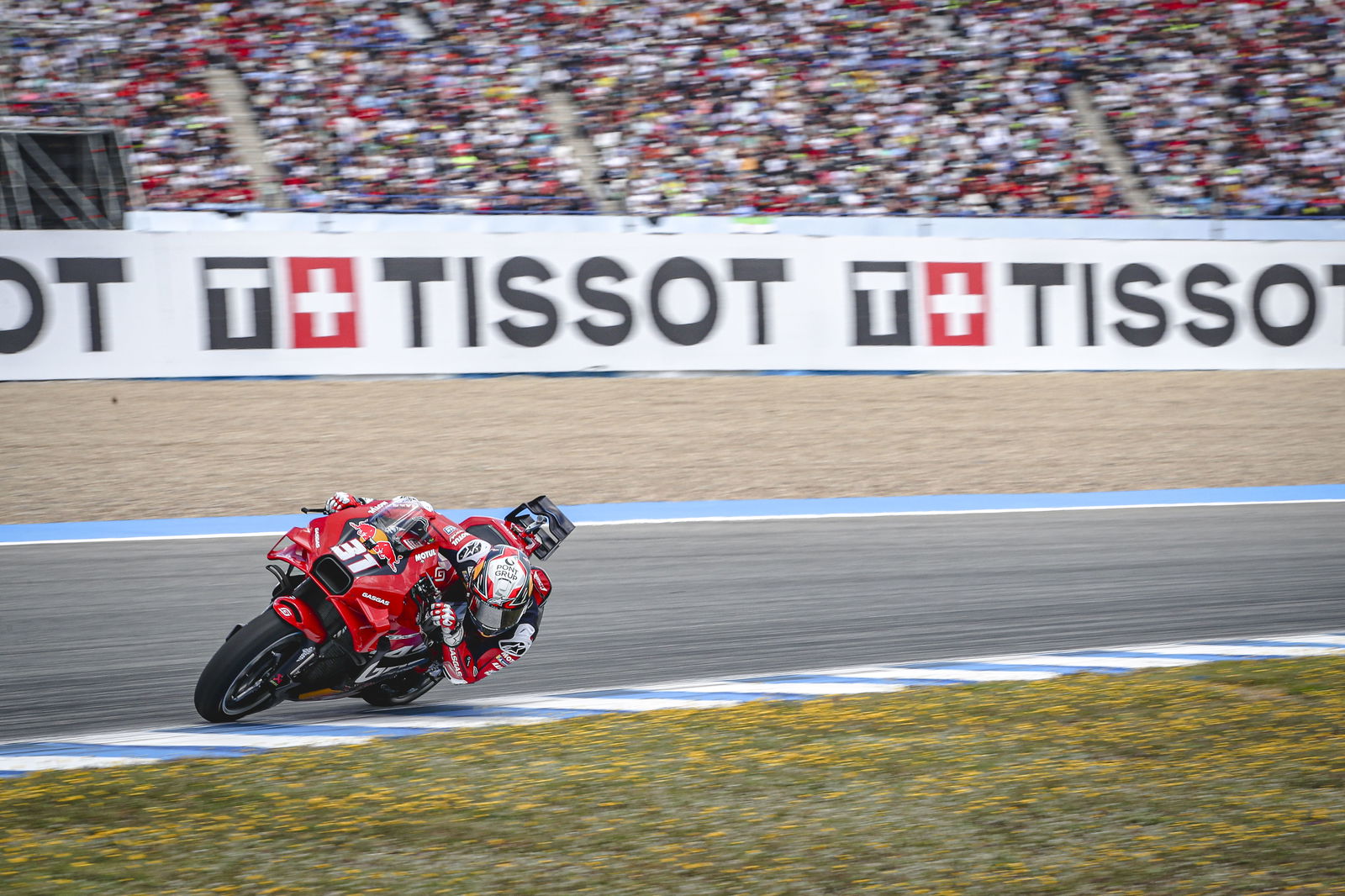
The Spanish Grand Prix was the first of 2024 in which Pedro Acosta was not a highlight. There were reasons for this. First, he crashed in Sunday morning Warm Up at turn seven, then he had a terrible start, then he had contact with Johann Zarco, and then he (like all the other KTMs) encountered the chatter that had been affecting Ducati until Jerez.
Whatever the causes, though, Acosta has something to bounce back from, some adversity to overcome, for the first time in his rookie MotoGP season. This adds another storyline to the French Grand Prix weekend coming up next month.
No relation
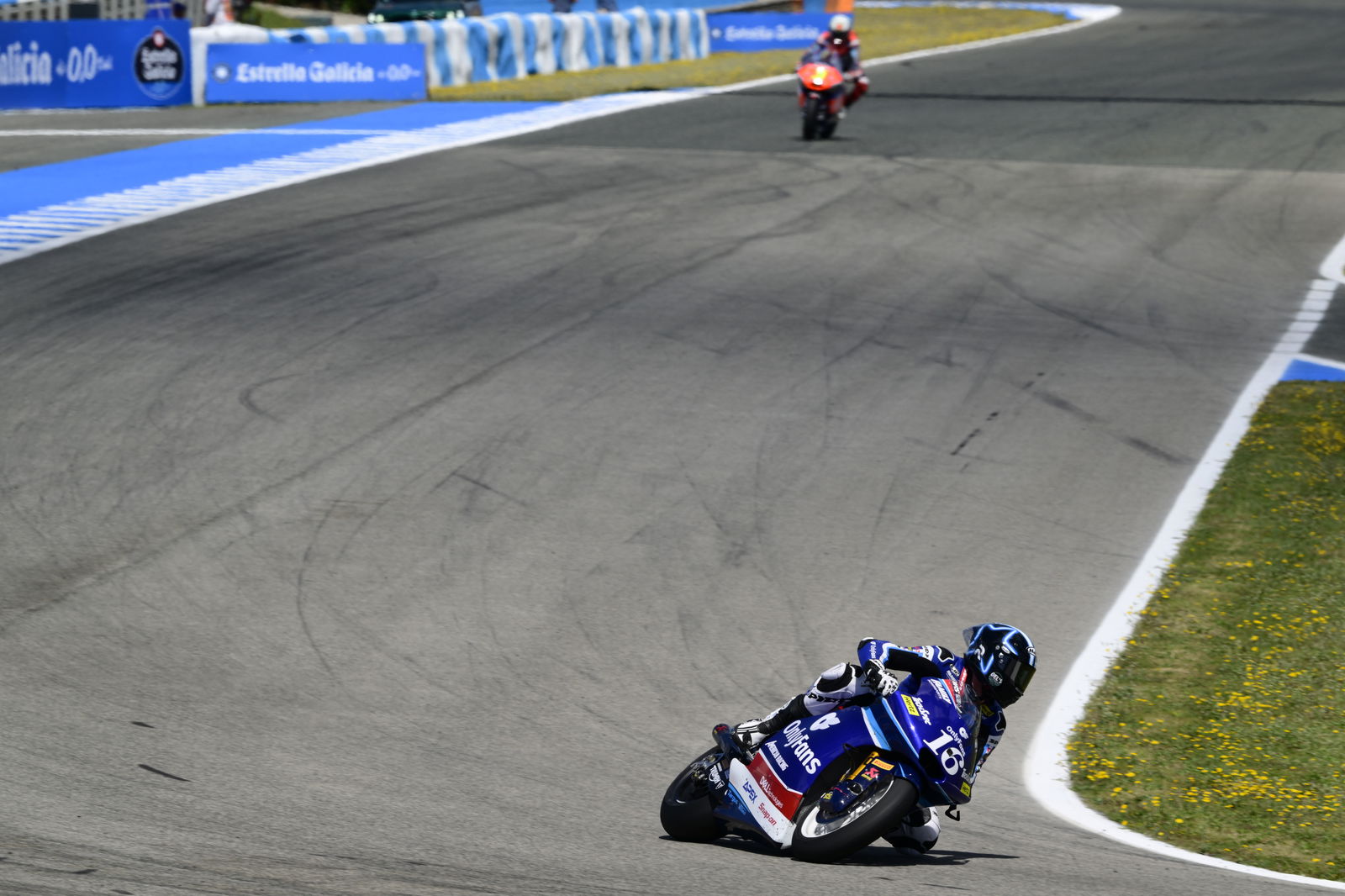
Joe Roberts is famously not related to Kenny Roberts, the three-time 500cc World Champion who began the US’s domination of Grand Prix racing. And yet, Roberts is the US’s biggest hope of Grand Prix success since Ben Spies’ Yamaha career went- well, the way it went.
That was over 10 years ago, and it’s been since Nicky Hayden won the 2006 MotoGP World Championship that an American led a World Championship. Or, it had been, until Roberts - Joe, that is - took his third second place in succession in Jerez, to lead the Moto2 World Championship with a total of 69 points. His advantage, in the standings, is five points of Spain’s Sergio Garcia, and his advantage in the paddock is that there is now a team in MotoGP owned by an American.
Justin Marks has explained that rider talent will come before nationality when Trackhouse Racing picks its rider line-up, but Roberts is displaying that, while he has an agreeable passport, his talent is not lacking.
Is Roberts going to win the Moto2 title? No, because Fermin Aldeguer, who won his first race of 2024 last weekend, will. Probably.
But if Roberts keeps sticking it on the box, running pace comparable to Ducati-bound Aldeguer, and can snag a win or two when the chances arise, the Stars and Stripes could be back on the MotoGP entry list for 2025.
Find all the latest MotoGP news on Visordown.
